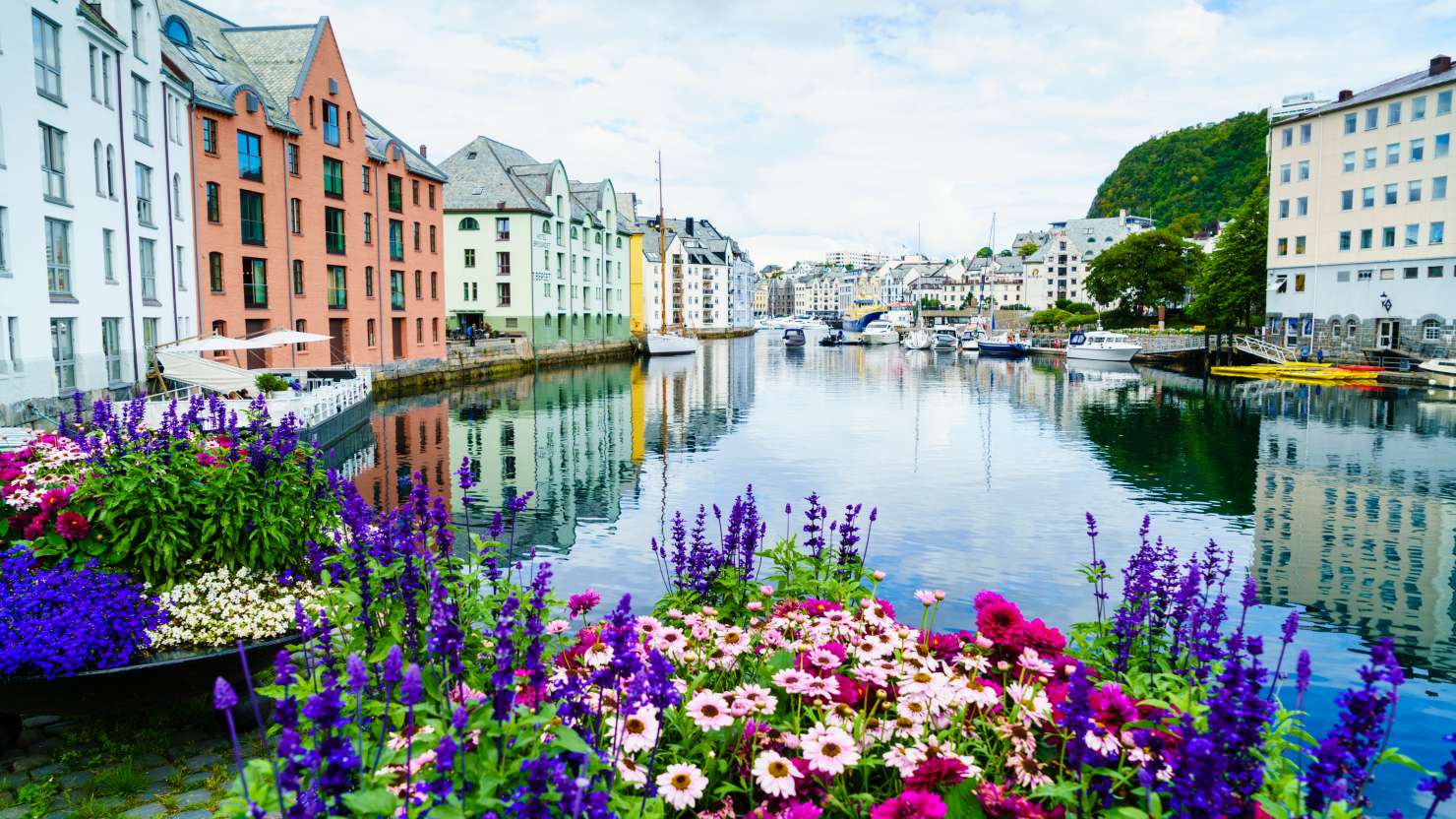What's new for winter 27/28
Explore more on Destinations

The Norwegian fjords are like nowhere else on earth, blending sublime natural beauty with compelling cultural wonders. Local resident and writer David Nikel shares four of his favourite destinations
Known as the starting point for trips to Pulpit Rock and the glistening Lysefjord, Stavanger offers much to the day visitor. From the pristine white wooden buildings of the Old Town to museums galore and a vibrant food scene, you can easily while away several hours on the city’s cobbled streets.
The residents of the Old Town have a great sense of civic pride, and it’s not unusual to meet them as they repaint their facades in an even brighter white or tend to their floral displays. The commercial district has its charms too, not least in colourful Øvre Holmegate. In 2005, a hairdresser in the street wanted to draw more visitors to his salon, so with the help of a designer, he had every building painted in eye-catching hues.
Stavanger is also home to Gladmat, Norway’s biggest food festival, which highlights the region’s reputation as the ‘food pantry of Norway’. Yet, despite that lofty title, local food writer Whitney Love Bredland recommends a simple lunch: ‘For a true taste of Stavanger, buy a tray of peel-and-eat shrimp from the Fish Market and bread from the grocery store. Relax on a harbour bench, watch the boats come and go, and enjoy!’

he old village of Olden nestles between the Nordfjord and a series of pretty lakes, all in the shadow of the epic Jostedalsbreen National Park. On a sunny day you’ll see a glistening calm fjord and blue skies in one direction, and in the other the intimidating white peaks that hint at the glacier just beyond.
Not far outside Olden, you can discover the Briksdal glacier arm – an ‘icy finger’ that unfolds down the lush Briskdalen valley from the glacial plateau. Admiring the green valley and rushing rivers ensures the time flies by, but the short walk to the glacier itself is a memory that will stay with you for a lifetime.
Back in the village, ask a local ‘Where’s the church?’ and you’ll get a hearty chuckle in response. Despite its small size – its population is just a few hundred – Olden has not one but two wooden churches, reflecting the importance of faith in rural Norwegian life. Both are worth a look, and even the newer one has a traditional style that belies its 20th-century construction date.

It might be the second city, but Norway’s former capital is firmly at the top of most people’s travel lists. Whispers of history in the narrow alleyways of the Bryggen Hanseatic wharf, the legacy of master composer Edvard Grieg, and some of the world’s finest artworks in the KODE museums – all are present here in the most spectacular of settings.
Comprising seven mountains and the ocean, Bergen’s backdrop is picture-perfect. To appreciate it fully, take the Fløibanen cable car for panoramic views. This is the start point for miles of hikes, and it’s here you’ll find yourself among the locals.
Back in the city, take time away from the waterfront to wander Skostredet. This charming street, once packed with shoemakers’ stalls, is now home to lovely second-hand shops and the Hallaisen ice cream parlour.
Segways were only recently made legal in Norway, so touring the city on one is now a popular and quick way to see the sights. If you prefer a different mode of transport, look to Bergen’s light rail system. A 20-minute ride brings you to Fantoft Stave Church. Standing atop a hill in the middle of a forest clearing, it’s a proud architectural icon of the spirit of Scandinavia.

After a fire devastated the wooden city in 1904, young Norwegian designers came together to rebuild Ålesund in the popular Art Nouveau fashion of the time. Today, the turrets, towers and carvings of the city stand head and shoulders above any other Nordic town as a snapshot of that creatively rich moment in time.
Ålesund appears delicately balanced on a collection of islands of all shapes and sizes, giving beautiful panoramic views from almost anywhere in the town. An easy ramble around the compact centre is a must to take in the architecture and surroundings. Take time to visit the Art Nouveau Centre: the story of the city fire and the German funding behind the reconstruction provides valuable context to what you see today.
Most guidebooks will point you towards climbing the 418 steps to the Aksla viewpoint for an iconic photograph of the town – as a result, it can sometimes get busy. Local resident Elise Aasen, who interacts regularly with visitors to Ålesund on X (formerly Twitter), suggests an easy alternative. ‘Storhaugen Park is on a smaller hill that still provides a 360-degree view yet is much easier on the knees,’ she says. ‘It’s wheelchair friendly and is located right behind the beautiful church, which many visitors wander over to anyway.’

of
Don’t miss out! Sign up for latest news, offers and competitions from P&O Cruises.